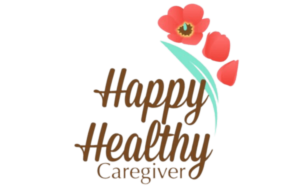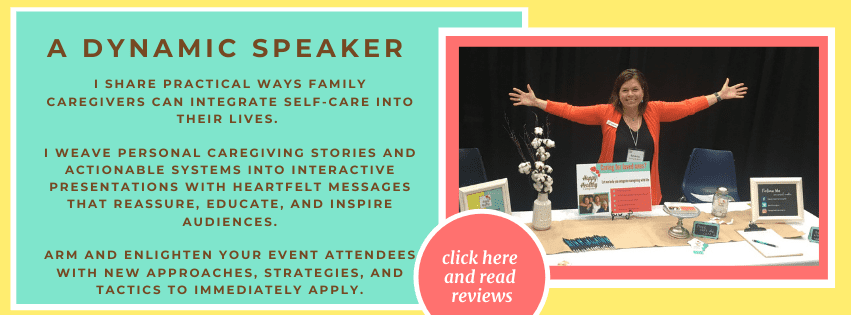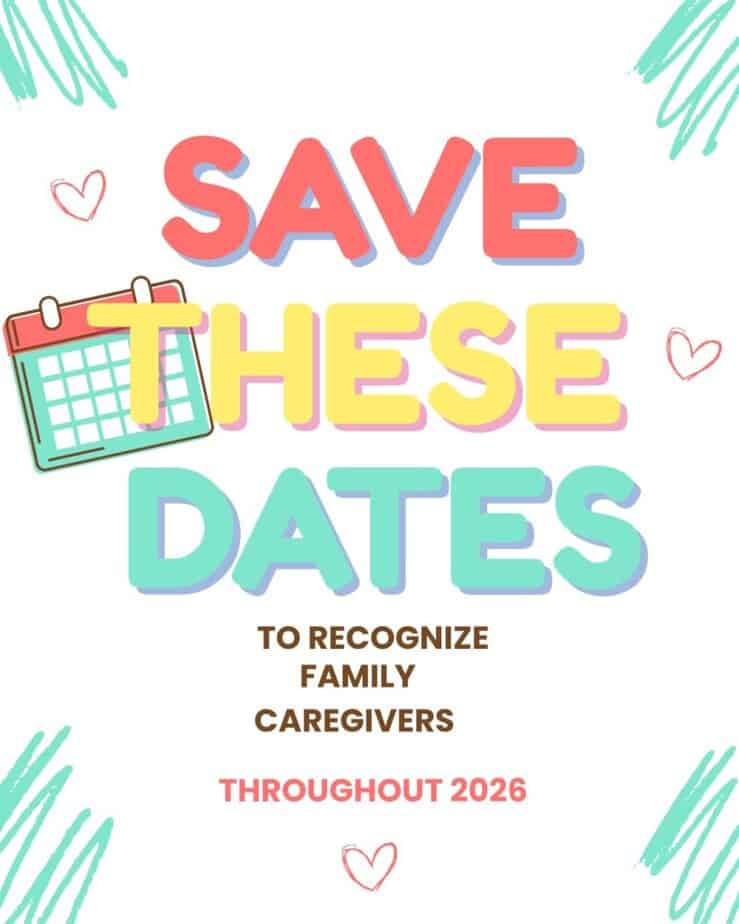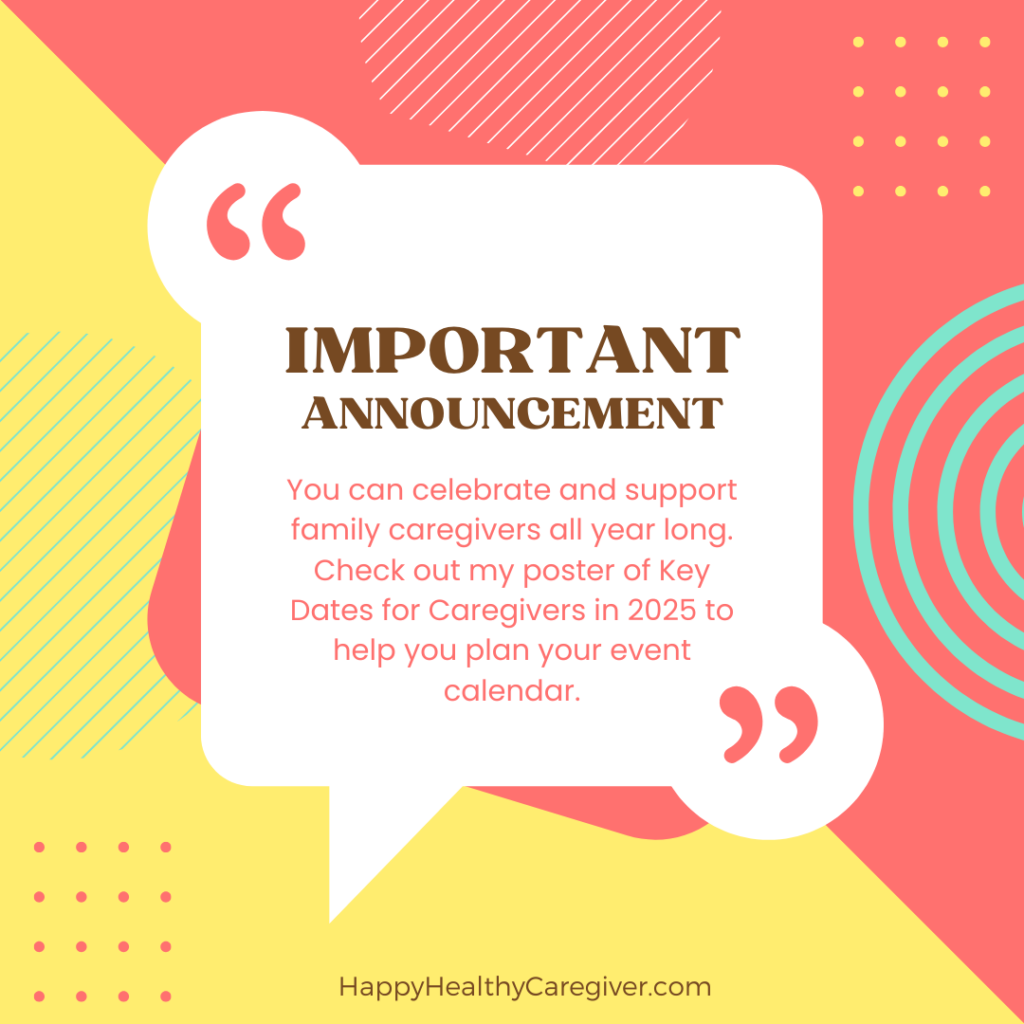When the throes of caregiving entered our lives, my husband Jason and I were at the peak of our careers. We had just emerged from the early childhood raising years, and we’re working hard at promotions and bonuses. We saw the caregiver mudslide coming, but we still weren’t prepared for the physical and emotional turmoil. We felt squeezed between caring for our adolescent children who were both in travel sports at the time and our aging parents who were declining and needing more care.
Jason was in sales and spent much time on the road, so he had some flexibility in his workdays. As long as he visited his accounts and hit his financial projections, his employer didn’t mandate how the work got done. My job was a traditional corporate job. I was expected to be in the office every day unless I had scheduled time off. I facilitated many daily meetings and was responsible for a pivotal growth project. At this time, remote work was not part of our work culture. Typically, you only requested to work from home if you had a contractor visiting your house or were feeling under the weather.
Even though my employer didn’t have an official caregiving policy, I was grateful that I had built enough trust with my leadership team that they allowed me the flexibility to work remotely when I needed it. I was conscious not to abuse this privilege since I felt like this unwritten generosity may end at any time. Since I worked at a company with over 50 employees, the Family Medical Leave Act (FMLA) was an option. However, I didn’t want to activate this ’12 weeks within 12 months’ leave of absence because I would be unpaid.
Instead, I planned my caregiving life as much as an I could around work responsibilities. I maximized my weekend and evening time for in-person visits to see my mom in a nearby senior living community. I used my lunch breaks to make caregiving-related calls and relay updates to family members. The majority of my paid sick days were allocated for caring for my mom and my two children. I quickly learned that much was out of my control. The caregiving years forced me to let go. Since I couldn’t prevent what was happening, I just had to be better prepared for a crisis when it arose and repeat the words to the Serenity Prayer. Kids would get sick, mom would fall, supplies would run out, and somehow everyone still needed to be fed and transported. Life was overwhelming.
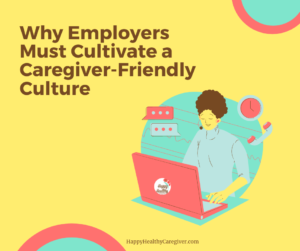
My husband and I were drowning in to-do items and functioning on fumes. We resented that we couldn’t be fully present in any situation, especially with our kids, and had little to no family downtime. Someone always needed more than we had to give. These demanding and competing stressors negatively impacted my health. I wore my stress all over my face in the form of adult acne and fever blisters. My anxiety was at an all-time high. I was gaining weight and not sleeping well. My emotional health was fragile. I cried with little prompting and always felt like I was never doing enough.
We didn’t realize it at the time, but we weren’t alone. The latest count is that there are over 53 million U.S. family caregivers.
In the U.S., according to this National Alliance for Caregiving/AARP 2020 Report, 61% of family caregivers are juggling a career while caregiving for a loved one. This same percentage experienced at least one work-related impact, such as taking hours or days off work to help care for a loved one. Many caregivers spend an average of 24 hours a week caring for loved ones – the equivalent of an additional part-time job (except likely unpaid)! While Jason and I may have experienced lower productivity, we were able to keep our jobs and muddle through this emotionally and physically exhausting caregiving season – which ended up lasting seven years!
While the government debates continue for a twelve-week federal paid family and medical leave, I hope our private sector employers move more swiftly to enact change. While it may just be a humanitarian thing to care about their employees, after over 20 years of working in corporate America, I know what receives the C-level’s attention are the bottom line impacts.
Caregiving Impacts on Employers
I’m amazed that most employers aren’t doing more for their working caregivers. Then I read this statistic in this Harvard Business School report which explained this vast disconnect. Eighty percent of employees with caregiving responsibilities said their productivity was negatively impacted – no surprise here. However, only 24% of employers believe caregiving influences their performance! This perception doesn’t match reality likely because family caregivers are reluctant to share their circumstances with their employers for fear that their employers may view them as not committed to their work.
Whether the challenges are recognized or not, hidden costs do impact employers.
This 2006 report from MetLife and the National Alliance of Caregiving estimated the cost to employers for all full-time, employed caregivers to be $33.6 billion! WOW!
Employee turnover and absenteeism are the two largest factors in these costs.
Employee Turnover Due to Care Responsibilities
Many employees are sacrificing their peak earning years to care for a loved one. And many of these employees are younger than you may think. According to this Harvard Business School research, half of the employees aged 26-35 and over 25% of employees aged 18-25 reported that they had already left a job due to caregiving responsibilities.
Women make up 61% of the family caregiver population. More women leaving the workplace to care for family members is resulting in a loss of talent and diversity.
Many family members are forced to make a tough career decision now that has future financial ripple effect later. Medicare doesn’t pay for long-term care. Families who don’t qualify for Medicaid assistance have to determine how to pay for home care and senior living care costs. With the median cost of full-time home care around $50,000 per year, many employees have to choose between staying in the labor force or caring for their loved one. If they decide to leave the workforce, their regular pay, health benefits, and retirement savings are impacted. Will our children be required to make these same tough career decisions? Have employers considered that individuals are living longer, often with multiple chronic conditions?
Here’s a Cost of Care Calculator provided by Genworth to provide an estimate of what long-term care could cost in your area. Keep in mind that cost in care is increasing due to overall demand and this industry’s labor shortages. While some industries contemplate automation filling the gaps, this McKinsey & Company article states caring for older adults likely won’t see much automation because it’s technically complex, and professional caregivers hold lower wages, hence a less attractive business proposition. This same article estimates healthcare and related jobs from aging could grow from 50 million in 2017 to 85 million by 2030.
Absenteeism Due to Care Responsibilities
Caregiving doesn’t just happen after hours. Medical appointments, senior living facility visits, arranging deliveries, consultations with financial, legal, and health professionals, and dealing with emergencies will impact the workday. More than half of the working family caregivers profiled in this Caregiving in the U.S. 2020 report shared that their care responsibilities made them go into work late, leave early, or take time off.
While I used to try and schedule the earliest doctor appointments, a medical visit with my mom would often equate to a half-day off from work. Mom used either a walker or a wheelchair so we needed extra time. With her mobility and hearing issues, our visits took longer. Then, we would often miss breakfast or lunch so we would need to stop for food. Instead of having an enjoyable date with mom, I would be stressed about missing work and consumed with thoughts of how I was going to get everything done. Because of the time off I spent on my mom’s and my kid’s appointments, I delayed my own wellness visits and concerns because I would feel so guilty about missing more work.
When someone is not physically present at their job, other employees have to pick up the slack. This then impacts this individual’s role and initiates a ripple effect on work productivity.
What Employers Can Do to Help
While there isn’t a one size fits all approach to creating a caregiver-friendly work environment, each organization can commit to doing something to make their culture responsive to a caregiver’s needs.
Here are a few actions employers can implement to help their caregiving employees:
- Start an Affinity Group, Workplace Wellness Program, and/or Employee Resource Group geared toward working caregivers. This group can meet regularly and support each other, share local resources, and learn from internal and external speakers who can share tips on asking for help, setting boundaries, prioritizing self-care, and managing family dynamics. I wished I had connected with other working caregivers. I didn’t know many people in my situation, but I knew there had to be others in my mid-sized company. What a gift it would have been to talk to someone else that completely understood how I was feeling. Now, the tables are turned. I offer interactive presentations to employers and organizations to share strategies, support, and resources available to family caregivers that I wish someone had shared with me. This dedicated group within the four company walls can also be a wonderful sounding board for the benefits team to evaluate current and future offerings.
- Offer an Employee Assistance Program which includes counseling and referral services. I had wished I knew more about our employee benefits. My husband and I both had full-time benefits with our employers. Neither one of our employers shared the caregiving-related benefits in our Employee Assistance Programs (EAP). It wasn’t until my primary caregiving experience ended that I was sitting in a lunch-and-learn and discovered how anyone in my immediate family could have utilized free counseling services. I also learned that my EAP would have researched the local senior living communities or home health agencies suitable for my mom. What a huge time saver this would have been for me.
- Add caregiving-specific platforms to the overall benefits portfolio. Platforms such as Torchlight provide digital and human support to employed caregivers. Their real-time access strategies and solutions are geared toward the everyday needs and challenges of caring for children or older adults. According to their site, Torchlight has saved 115 hours per user per year.
- Share a benefit that includes discounts or subsidiaries for backup child and elder care, house cleaning, or meal delivery services. Reducing the financial strain on families and making it easier for working caregivers to focus on their job improves their overall situation and will help retain happier employees.
- Publish an online list of caregiver-specific resources and tools. Of course, the Happy Healthy Caregiver podcast and initial complimentary caregiver coaching call need to be on this list! I’d also recommend checking out our list of caregiving resources.
- Provide training for managers. Leaders need to learn how to handle situations with caregiving employees and be made aware of what their employer offers to help caregivers. Training the management team on how flexible work arrangements provide positive gains for the employer and the employee. Managers can also be trained to watch for early signs of caregiver burnout.
- Formalize a caregiving policy statement and flexible work options. Flexible work options may include job sharing, switching from full-time to part-time, sabbatical leave, compressed workweeks, remote work, less demanding work options, or leave of absence. In addition to offering these flexible options, the potential stigma around this needs to be dispelled. Individuals who take advantage of flexible work arrangements can still be rock star employees who are committed to their work and excel in their positions. Perhaps one silver lining of the COVID-19 pandemic is that it may normalize working remotely, which will help family caregivers who juggle competing work and family priorities.
- Offer legal and financial counseling for employees and their family members. Complimentary or reduced-cost sessions with elder law and financial planners will help ensure important documents are in place, create peace of mind for the family caregiver, and reduce the hours of potential family and estate challenges later.
Caregiving will not end when these pandemic days are behind us. The caregiving season of life will likely impact every employee at some stage in their life. According to the U.S. Census, by 2030, all of the Baby Boomer Generation will be 65 years or older. In the U.S. alone, 10,000 baby boomers turn 65 each day!
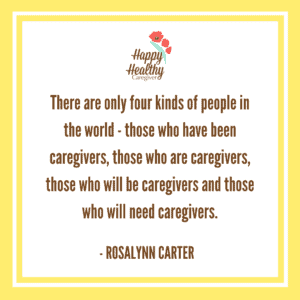
The relationship between an employee and their employer is mutually beneficial. After reading this post, if you are a working caregiver or leader in your organization, please forward this to the benefits and culture decision-makers in your organization. Investing in a caregiver-friendly culture provides win-win benefits for everyone.
Further Reading on this Topic:
- The Caring Company: How Employers Can Cut Costs and Boost Productivity By Helping Employees Manage Caregiving Needs
- Navigating the Pandemic: A Survey of U.S. Employers Report
- AARP’s Supporting Caregivers in the Workplace: a Practical Guide for Employers
- Fact Sheet: The American Families Plan
